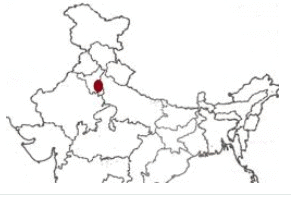Chapter Test: Colonialism & Tribal Societies - CTET & State TET MCQ
10 Questions MCQ Test Social Studies & Pedagogy Paper 2 for CTET & TET Exams - Chapter Test: Colonialism & Tribal Societies
Long ago, how many capital cities were founded in a small area on the left bank of river Jamuna ?
| 1 Crore+ students have signed up on EduRev. Have you? Download the App |
Name this historic imperial city that became a dusty provincial town in the 19th century before it was rebuilt as the capital of British India after 1912.

What is the tomb of a Sufi saint called?
Which were the three important Presidency regions set up by the British for administrative purposes?
The image given below is an artists impression of an important port town of 17th century in the state of Andhra Pradesh today. But later as new ports were set up by the British in Bombay, Madras, Calcutta etc, this one lost its importance. Identify this port town. This port was also deurbanized during 19th century.
From the outline map of India, identify this place marked in red circle. This city began to grow when the East India Company stared using this place as its main port in Western India
From the list of options given below, which cities were de-urbanised during the 19th century?
Complete the following. In the late 18th century, Calcutta, Bombay and ______________ rose in importance as Presidency cities and were the centres of British power
From the following options, which one refer to De-urbanisation ?
|
61 videos|119 docs|77 tests
|
|
61 videos|119 docs|77 tests
|

















